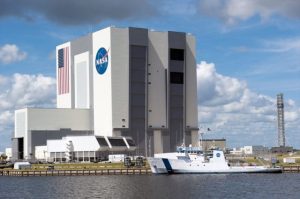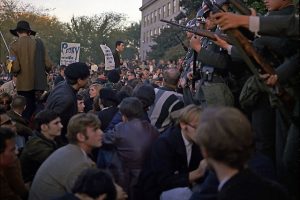10 Wild Facts About New York City’s Hidden Side
Ever wondered why New York City is called the Big Apple? The nickname actually has its roots in horse racing, not fruit stands or skyscrapers. In the 1920s, stable hands in New Orleans used the term to describe New York’s racetracks, where the stakes—and prize money—were the biggest. They called it “the Big Apple” because it represented the ultimate goal, the place where fortunes could be made.
A sportswriter from the New York Morning Telegraph overheard the phrase and loved it. He began using it in his racing columns, and soon enough, the nickname caught on with the public. Today, it’s one of the most recognized monikers for any city in the world.
And that’s just one of New York’s many hidden stories. From secret subway stations to whispering galleries, the city is packed with fascinating facts most people never hear about.
10. New York’s Central Park Once Cost More Than the Entire State of Alaska
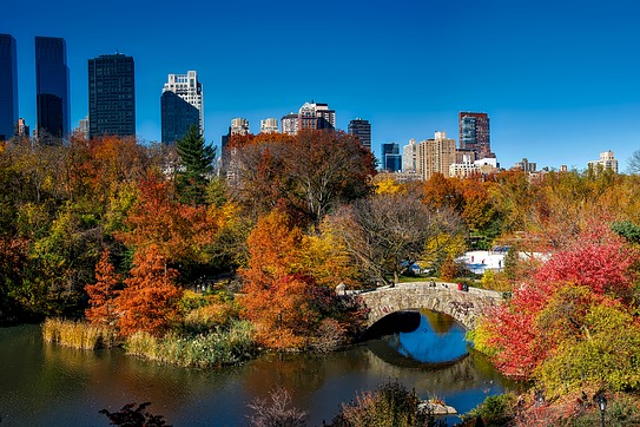
You’ve seen it in movies, TV shows, travel blogs—it’s almost impossible to think of New York City without picturing Central Park. Spanning a massive 843 acres, this iconic green space in the heart of Manhattan is more than just a park—it’s a piece of history, a cultural symbol, and, surprisingly, one of the most expensive real estate projects in early American history.
What’s truly mind-blowing is that New York paid more for Central Park than the United States paid for the entire state of Alaska.
Let’s take a quick step back. In the mid-1800s, New York’s elite wanted a grand park—something to rival the lush public gardens of European capitals like London and Paris. But the land they had in mind? It was rocky, hilly, and considered useless for urban development. Blasting it with dynamite was thought to be impossible. So what do you do with land that can’t be built on? You turn it into a park.
In 1853, the city bought the land for $7.4 million—an astronomical figure at the time. Then came the transformation. Over 20,000 workers, including engineers, builders, and manual laborers, shaped the landscape, designed bridges, planted trees, and carved out what would become the most visited urban park in the United States. By 1876, the final bill was $14 million, which would be over $400 million today when adjusted for inflation.
Here’s where it gets even more unbelievable: just over a decade later, in 1867, the United States bought Alaska from Russia for $7.2 million—yes, that’s less than what New York had already spent on Central Park.
Let that sink in. An entire U.S. state, rich in natural resources and spanning over 586,000 square miles, cost less than a patch of Manhattan land converted into a public park. Alaska, of course, would go on to provide the U.S. with oil, gold, and strategic military positioning, while Central Park became one of the world’s most beloved urban sanctuaries.
But even if it didn’t bring mineral wealth, Central Park boosted property values, influenced city planning, and became a global icon—arguably priceless in its own right.
Is it practical? Maybe not. Is it fascinating? Absolutely. It’s stories like these that remind us history isn’t just about kings and wars—it’s about the bold choices cities make, and the surprising comparisons that emerge when we look a little deeper.
9. NYC: A City Where Trees Outnumber People in Other American Cities
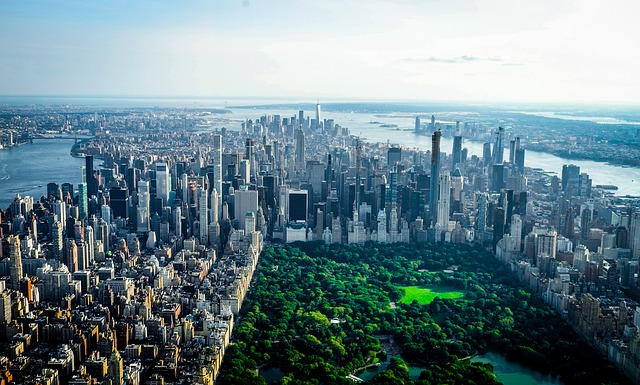
Let’s talk about Central Park. You know that iconic green space in the heart of New York City. Well, it plays a crucial role in making New York stand out in an incredible way. It ensures that the Big Apple can stake a claim to yet another astonishing record.
Here’s the deal. New York City is home to more trees than there are people in any other American city. Picture this: there are a whopping 5.2 million trees within the city limits of New York. Now, if you were to line them up trunk to trunk, in a single file line, they would stretch an amazing 118 miles. That’s like having a never-ending tunnel of trees!
To put this in perspective, New York itself has a population of nearly 9 million people. But here’s the catch. Since we’re talking about this unique comparison, the population of New York City doesn’t really count in this context. After all, we’re highlighting how New York’s tree population dwarfs that of other cities.
Now, let’s look at the next most populous city in the United States – Los Angeles. It has around 4 million people, and that’s just the population of the city proper, not even considering the much larger metropolitan area. But when it comes to the number of trees, even on a per-city basis, New York still emerges victorious.
Think about it. In most cities, you might find a decent number of trees here and there, perhaps in parks or along streets. But New York takes it to a whole new level. These trees not only add to the city’s aesthetic appeal, providing shade and beauty, but they also play a vital role in the ecosystem. They help filter the air, reduce pollution, and provide habitats for various wildlife.
8. NYC Isn’t Just a City—It’s Bigger Than Most States and Even Some Countries
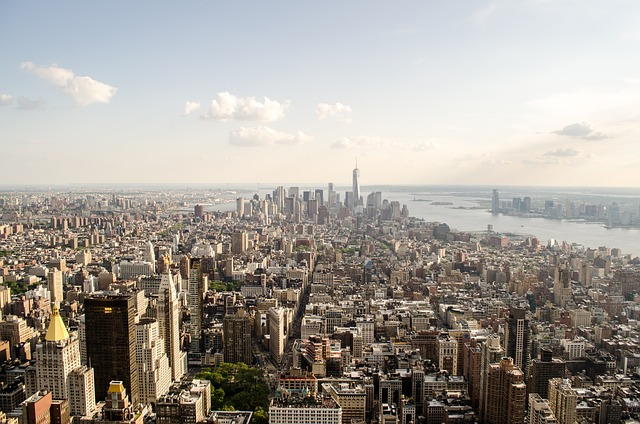
New York City is famously loud, fast, and overflowing with life. But here’s a number that might truly surprise you: NYC’s population isn’t just big—it’s bigger than most entire U.S. states.
According to the U.S. Census, over 8.3 million people call NYC home. That’s more than the total population of 38 out of 50 U.S. states. Think about that for a second. A single city—just five boroughs packed onto a cluster of islands and peninsulas—is more crowded than entire states like Washington, Colorado, and Wisconsin.
Take Washington state for example. It ranks as the 13th most populous state, yet still falls short of New York City with only 7.8 million residents. And that’s a state with vast lands, mountains, and tech cities like Seattle. NYC, by contrast, is stacked vertically—people live above delis, next to laundromats, and under rooftop gardens.
But the wild comparisons don’t stop there.
New York City actually has a larger population than over 100 countries. Yes, countries. Denmark? Around 5.9 million. Laos? About 7.6 million. Even Qatar, flush with oil wealth and futuristic skyscrapers, has just 2.7 million people. You could fit everyone from Qatar into NYC three times over—and still have room for brunch in Brooklyn.
This kind of population density creates its own world—one where subway lines are lifelines, corner bodegas are sacred, and neighborhoods are small universes with their own rhythms and rules. It’s why NYC feels less like a city and more like a country all its own.
Whether you love the energy or need a nap just thinking about it, there’s no denying that New York City is a global powerhouse—in culture, economy, and, yes, pure human numbers.
7. NYC: A Skyscraper Paradise That Outnumbers Some Nations
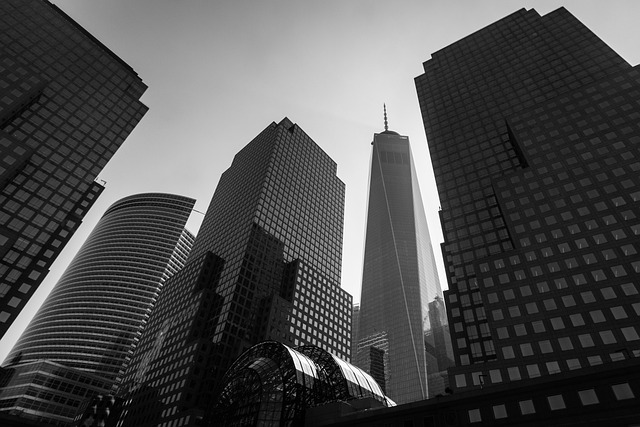
When you think of iconic skylines, the New York skyline undoubtedly springs to mind. Its fame is not just limited to those who have visited the city in person. Thanks to the magic of film and television, Downtown Manhattan has become a household visual. It has been prominently featured in countless movies, and that view filled with skyscrapers is a staple scene in any show set in the Big Apple.
You might be surprised to learn that New York is no longer the city with the most skyscrapers globally. Currently, Hong Kong and Shenzhen in China have taken the lead in this regard, boasting a larger number of these towering structures. However, that doesn’t mean New York is lagging far behind. The city still proudly stands tall with an impressive 314 buildings that soar over 150 meters (or 492 feet). And if that’s not enough to impress, it also has 16 skyscrapers that are more than double that height. These colossal structures truly make the New York skyline a sight to behold.
Now, let’s consider a fun thought experiment. If we were to rank all the countries in the world based on the number of skyscrapers they have, and we were to include New York City as a separate entity in this ranking (since it’s such a significant skyscraper hub on its own), you’d be amazed to find that New York City still manages to snag the third spot. China takes the top spot by a wide margin, being the country with the most skyscrapers. The United States as a whole ranks second. And then, all by itself, New York City comes in third. It has about 24 more skyscrapers than its closest competitor, Japan.
Now, here’s where things get even more interesting. Details about the exact numbers can be a bit hazy, but according to some estimates, it seems that New York City might actually have more skyscrapers than the entire continent of Europe. That’s right! The city’s collection of skyscrapers is so vast that it could potentially outnumber all the skyscrapers in all the countries across the European continent. It’s truly a testament to New York’s status as a global hub of architecture and urban development.
6. NYC’s Economy Is So Huge, It Rivaled Canada’s GDP
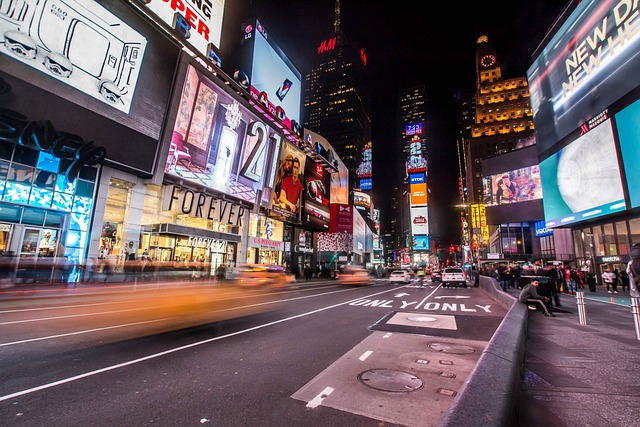
It’s no secret that New York City is a giant. But beyond the towering skyscrapers and packed streets, there’s another staggering figure that puts this city in a league of its own: GDP. If you’ve ever wondered just how powerful NYC really is in economic terms, the numbers may leave you speechless.
New York City’s nominal GDP recently hit $1.7 trillion—a figure so massive it doesn’t just outpace other U.S. cities, it rivals entire countries. To put it plainly: if NYC were an independent nation, it would be the 13th largest economy in the world. That’s not a metaphor—it’s a fact backed by data from organizations like the International Monetary Fund and Statista.
And who’s it neck-and-neck with? Canada. Yes, the second-largest country on Earth by land has an economy only slightly larger than a single U.S. city. Since at least 2017, the GDP of Canada and NYC have been running a tight race. Recent numbers show Canada pulling just ahead, but not by much.
This isn’t just about bragging rights. It highlights how New York City is an economic superpower, driven by finance, tech, media, real estate, tourism, and a relentless work ethic. The New York Stock Exchange alone accounts for trillions of dollars in global trade. Add in the financial firms on Wall Street, the sprawling creative industries, and the startup scene booming in Brooklyn, and you’ve got an urban economy that’s punching way above its weight.
Think about it—one city with more financial output than most nations. It’s no wonder they say if you can make it here, you can make it anywhere.
5. The Tale of Manhattan: A Place Where Alleys Are Rare

Can you recall that unforgettable scene from the first Tobey Maguire – starrer Spider-Man? It’s the moment when Peter Parker, hanging upside down in an alley, shares his first kiss with Mary Jane. It’s an iconic scene that has etched itself into the hearts of movie fans worldwide. However, here’s the catch – this kind of scenario is highly improbable in real life, and not just for the sake of reality’s constraints. Geographically speaking, it’s a long shot.
You see, New York, despite the countless movies that have painted a different picture over the years, has almost no alleys. It’s a little – known fact that might shatter the illusions of those who’ve been captivated by the silver screen.
Most of the alley scenes you see in movies set in New York are actually filmed in the same location – Cortlandt Alley. Why is that? Well, it’s because Cortlandt Alley is one of the few alleys that actually exist in the city. It has that quintessential dark and dingy charm that movies have made synonymous with New York alleys. But here’s the irony – it’s only because it’s one of the few real alleys left that it has been molded into the “typical” New York alley by the magic of filmmaking.
The reason for this scarcity of alleys lies in Manhattan’s history and urban planning. Most of Manhattan adheres to the 1811 street grid. This grid system was designed with a clear purpose – to maximize real estate. Buildings were meticulously planned and constructed as solid blocks, with no gaps between them. This design approach left little room, if any, for the creation of alleys.
The very few alleys that do exist in Manhattan are like relics from a bygone era. They predate the 1811 grid system and have managed to survive the city’s rapid development and expansion. These remaining alleys stand as a testament to a time when Manhattan’s layout was different, a time when alleys were more common.
4. Why You’ll Never See a Walmart in New York City
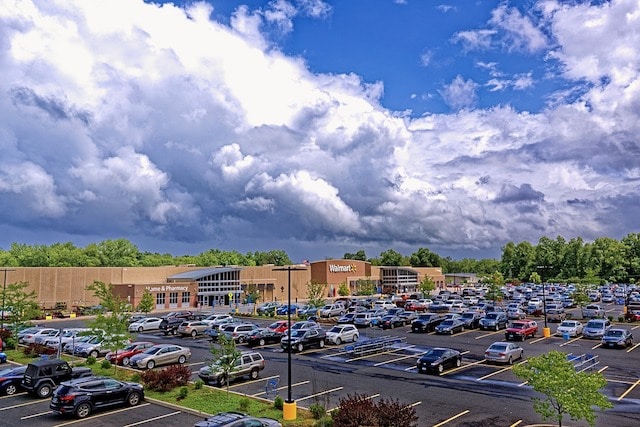
In a country where you can stumble upon a Walmart almost anywhere—from rural towns to sprawling suburbs—it’s pretty shocking to learn that there isn’t a single Walmart store in New York City. That’s right: in a metropolis of over 8 million people, the world’s largest retail chain has zero presence.
It’s not for lack of trying. For years, Walmart attempted to break into the NYC market, investing heavily in marketing and proposals. But the city pushed back—hard. At the heart of the resistance? Labor unions. Many businesses in the city are unionized, and these unions weren’t keen on letting a giant retailer known for non-union labor and lower wages stake a claim on valuable city real estate.
Walmart’s critics in the city argued it would disrupt the local economy, undercut smaller businesses, and pressure existing retailers to cut labor costs—ultimately lowering wages and benefits across the board. Even as retail giants like Target expanded their NYC footprint, Walmart couldn’t shake its negative image among city officials and community leaders.
By the time a decade had passed since Walmart had publicly backed away from New York, the door was still very much closed. City council members and civic groups continued to cite the chain’s controversial labor practices, and in some cases, their resistance became a symbol of local economic pride.
The result? A major American city that stands as one of the only places in the country without a single Walmart store. If you’re in the Big Apple and looking for those low, rollback prices, you’ll have to travel well beyond the boroughs.
Pretty incredible, right? For a company with over 4,600 stores nationwide, zero in NYC is not just rare—it’s almost unthinkable.
3. A Surprising Haven of Clean Tap Water Amidst Its Reputation

New York City has long been a city of contradictions, a place where two seemingly opposite images coexist. On one hand, it’s the glittering, larger – than – life hub of capitalism. The presence of Wall Street, with its high – stakes financial dealings, the towering skyscrapers that pierce the sky, and the constant influx of glamorous people from all walks of life give it this aura of sophistication and wealth.
But on the other hand, there’s this perception of New York as a city plagued by crime, filth, and an abundance of trash and rats. Strangely enough, these two contrasting views seem to coexist without much issue. People have learned to accept that New York can be all these things at once.
However, one aspect that really defies this so – called “dirty city” reputation is its tap water. In fact, New York City is well – known for having some of the cleanest tap water in America.
Take 2019, for example. That year, New York City’s tap water was actually named the cleanest in the entire state. And it’s not just about cleanliness. This water also routinely wins the title of the best – tasting tap water. It’s not something that just happened by chance.
The reason behind this high – quality water dates back over 50 years, to some crucial decisions made regarding how to supply water to this sprawling metropolis. There were, of course, differing opinions on the matter. Some were in favor of using the Hudson River as a water source. After all, it would have been a cheap option. But the Hudson River has long been notorious for being disgusting and polluted. Fortunately, cooler heads prevailed, and this idea was rejected.
Instead, the city turned its attention further upstate, to the Catskill Mountains. Water from fresh, unpolluted aquifers in this area has been pumped into the city. This source of water has a significant advantage. Because it’s so pure to begin with, it requires far less pollution treatment compared to other potential sources. As a result, the water that comes out of New York City taps is not only cleaner but also tastier.
People have often wondered what makes this water taste so good. There are several theories. Some suggest that it could be the minerals present in the water. These minerals might interact with the taste buds in a way that gives the water its unique and pleasant flavor. Others think it could be a matter of perception. Maybe the fact that it’s known to be clean and from a pristine source makes people subconsciously think it tastes better.
There’s even a more unexpected possibility. Some speculate that the microscopic shrimp living in the water might contribute to its taste. While it might seem a bit far – fetched at first, it’s an interesting thought. Who would have thought that these tiny creatures could play a role in making New York City’s tap water one of the best in the country?
2. Uber Arrived in NYC—and Drunk Driving Accidents Plummeted

Uber might get its fair share of criticism—ranging from labor rights disputes to passenger safety concerns—but in New York City, the ride-sharing giant may have accidentally done something remarkable: it helped reduce drunk driving accidents by a significant margin.
According to a 2017 study, since Uber launched in NYC back in 2011, alcohol-related traffic crashes dropped by more than 25%, and in some estimates, even up to 35%. That translates to about 40 fewer accidents every month—a meaningful shift in a city known for its nightlife and heavy traffic.
Why is this so fascinating? Because the same trend didn’t happen everywhere. Researchers looked at data from 100 different cities, and New York stood out as one of the few where the correlation was strong and consistent. Cities like Portland and San Antonio also showed similar declines, but others—like Reno—didn’t budge at all.
The reasons aren’t entirely clear. Is it the density of bars and clubs? The ease of finding a ride at 2 AM in Manhattan versus a smaller city? Or perhaps New Yorkers just adapted faster to the convenience of tapping their phone instead of risking a DUI?
Whatever the exact cause, the outcome is hard to ignore. At a time when ride-sharing platforms were being scrutinized for everything from wage fairness to traffic congestion, Uber’s arrival came with a surprising silver lining in New York.
1. New York’s Water Towers: A Necessity for Tall Buildings

If you’ve never set foot in New York, there’s a peculiar building – related phenomenon you might have missed. However, even if your travels haven’t taken you there, chances are you’ve seen movies where someone is perched on a New York rooftop next to one of those large, wooden water towers. It’s quite possible that you’ve even pondered, in this modern era, why these structures still exist.
Let’s start with the layout of New York’s buildings. The vast majority of apartment buildings in the city stand six stories tall. This isn’t just a random architectural choice; it’s closely tied to the reason so many buildings have those wooden water towers on their roofs. These towers are far from being obsolete relics; they’re in daily use.
The geology of New York plays a crucial role here. The city is built on shallow rock, which presents a significant challenge when it comes to providing water pressure. Electric pumps, which are commonly used in many other areas, just won’t cut it in New York. Due to this lack of sufficient water pressure, getting water up to apartments in buildings taller than six stories becomes extremely difficult. That’s where water towers come into play.
Larger buildings rely on these water towers to supply water to all their units. Residents use this water for everyday activities like bathing and drinking. It’s the lifeblood of the building’s water supply system.
Now, let’s talk about the appearance of these water towers. Most people assume they’re antiques, and there’s a good reason for that. Even newly constructed water towers look old. They’re made with untreated wood, and this is intentional. The untreated wood ensures that the water isn’t tainted. As a result, regardless of their actual age, they all have that rustic look.
These water towers are not only functional but also serve an important safety purpose. Each one has a capacity of 5,000 to 10,000 gallons, which includes a reserve supply of water. In the event of a fire, this reserve water can be used to help fight the blaze, providing an extra layer of protection for the building and its residents.











